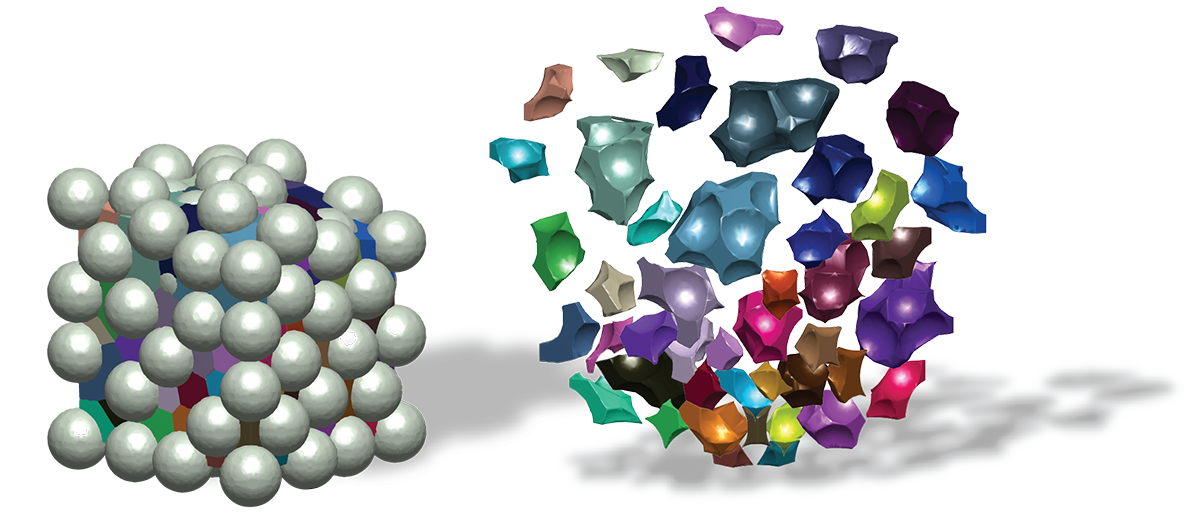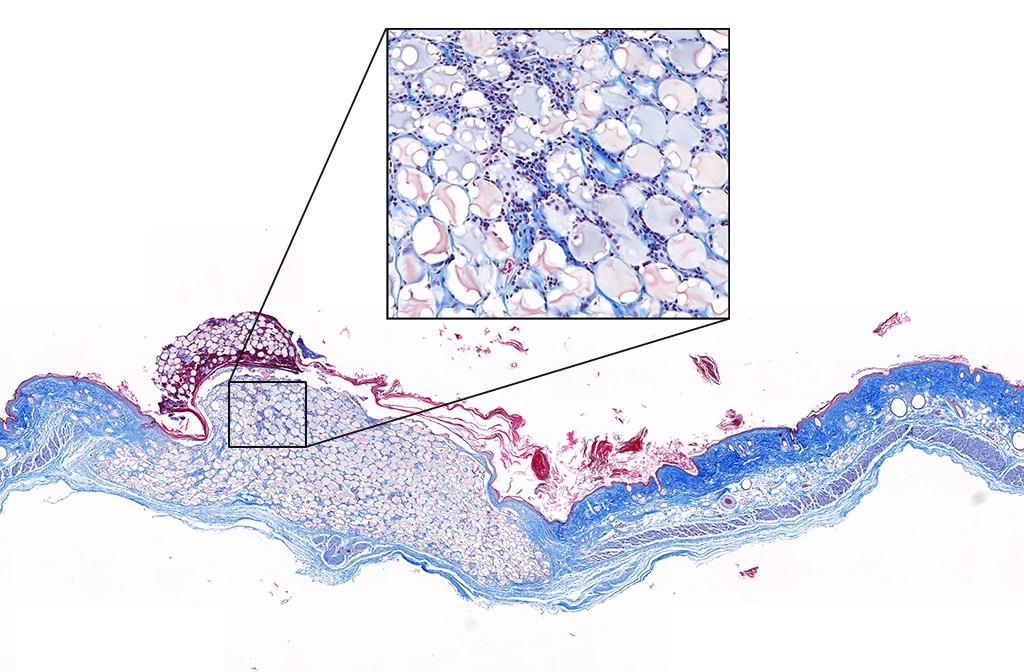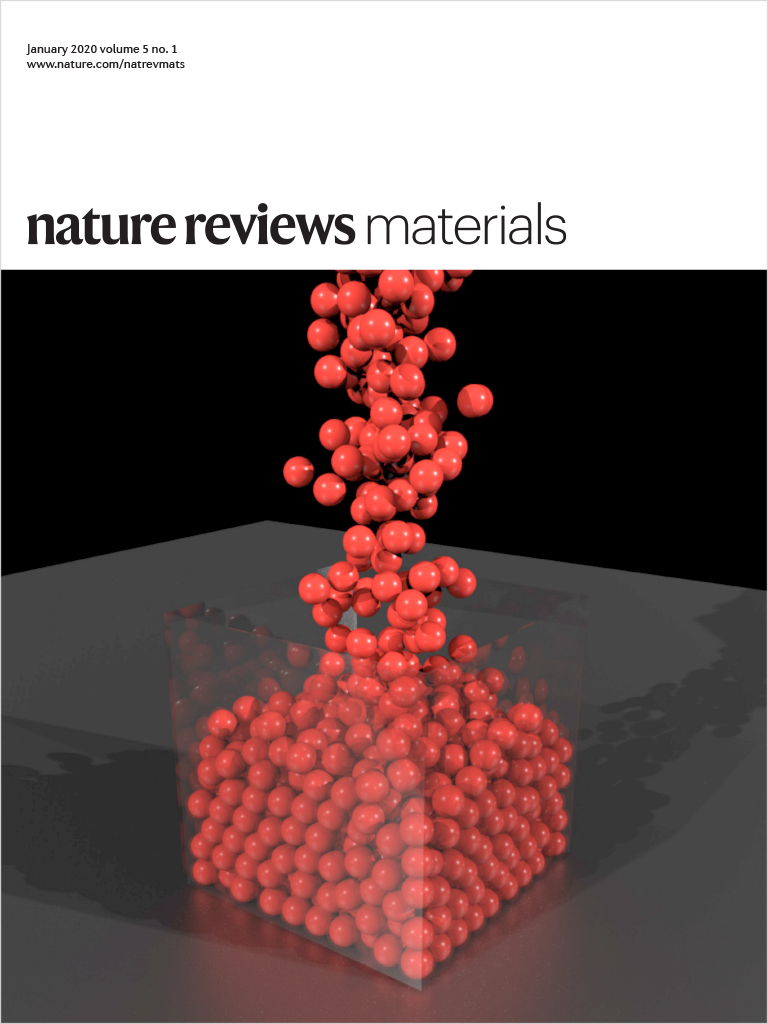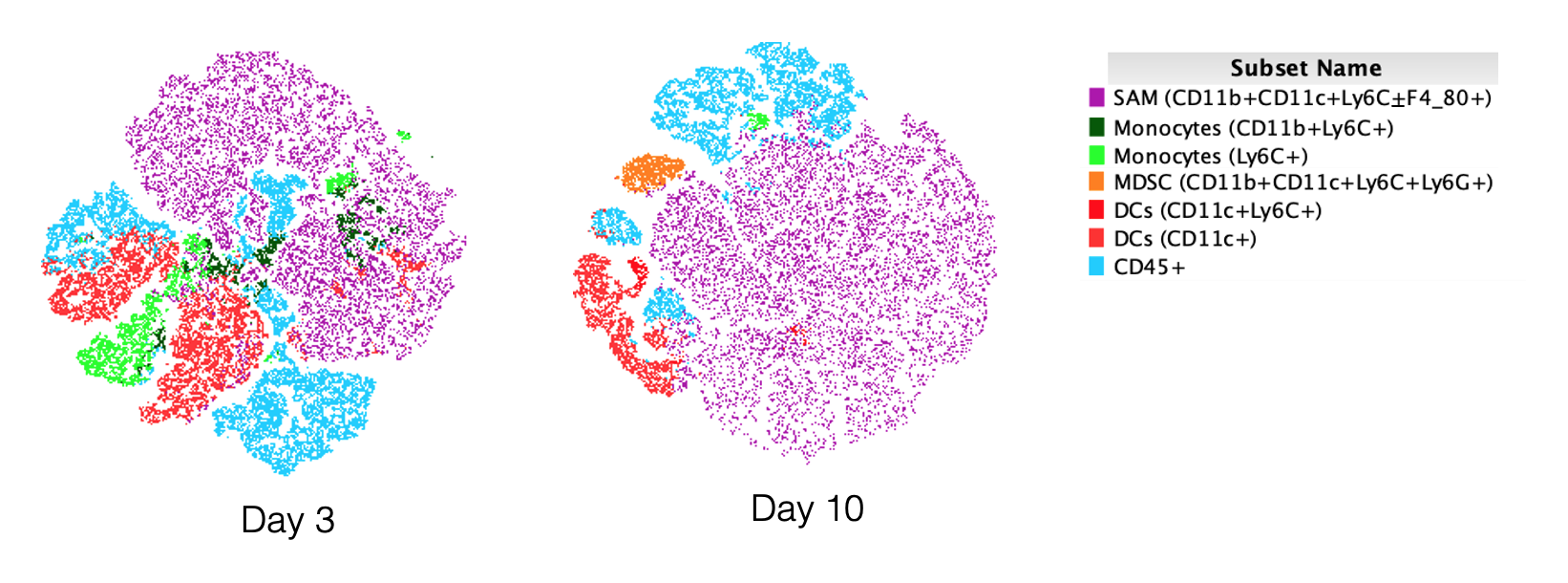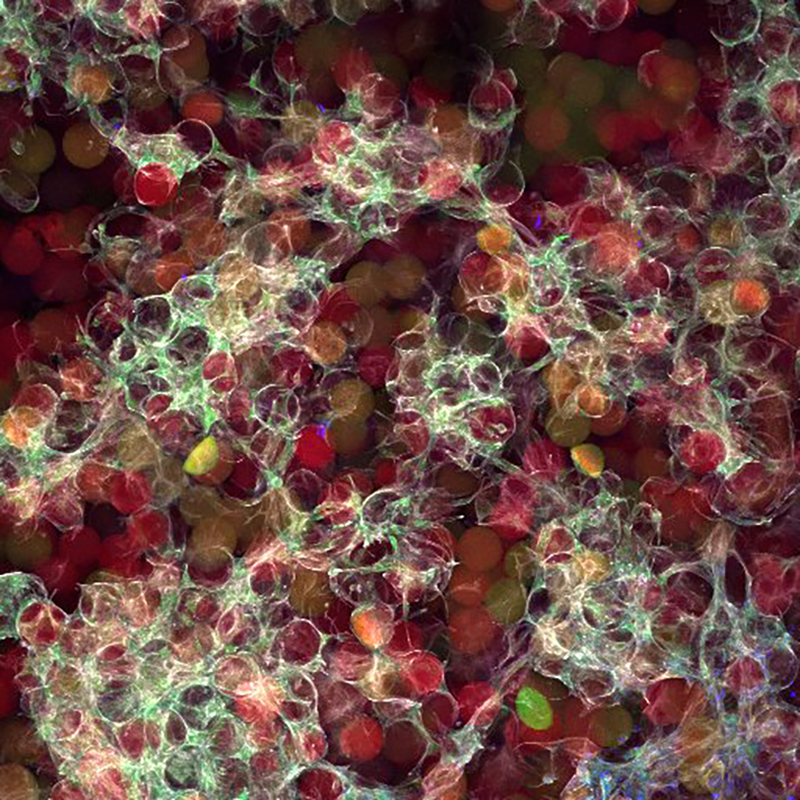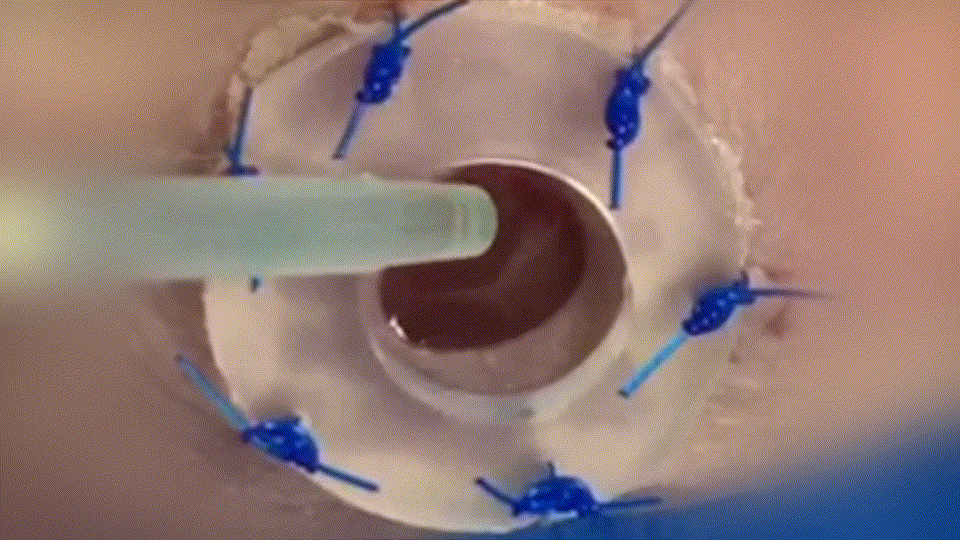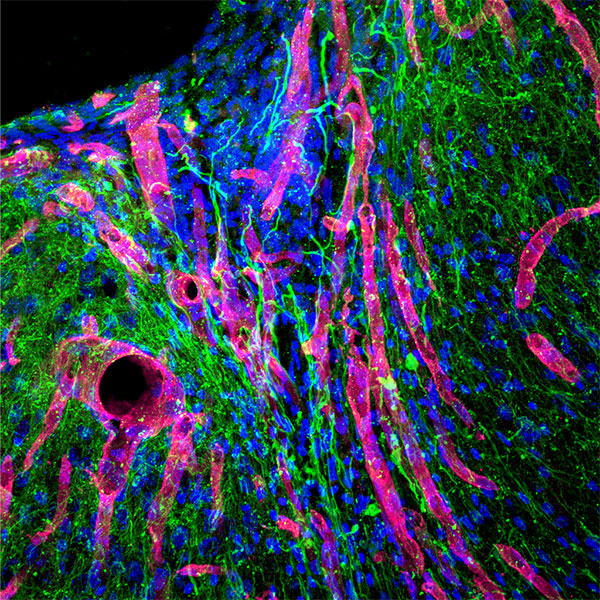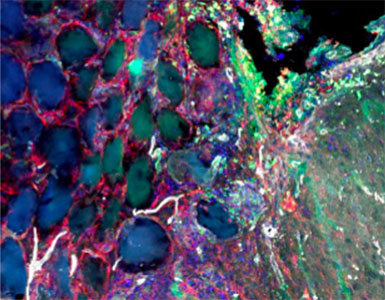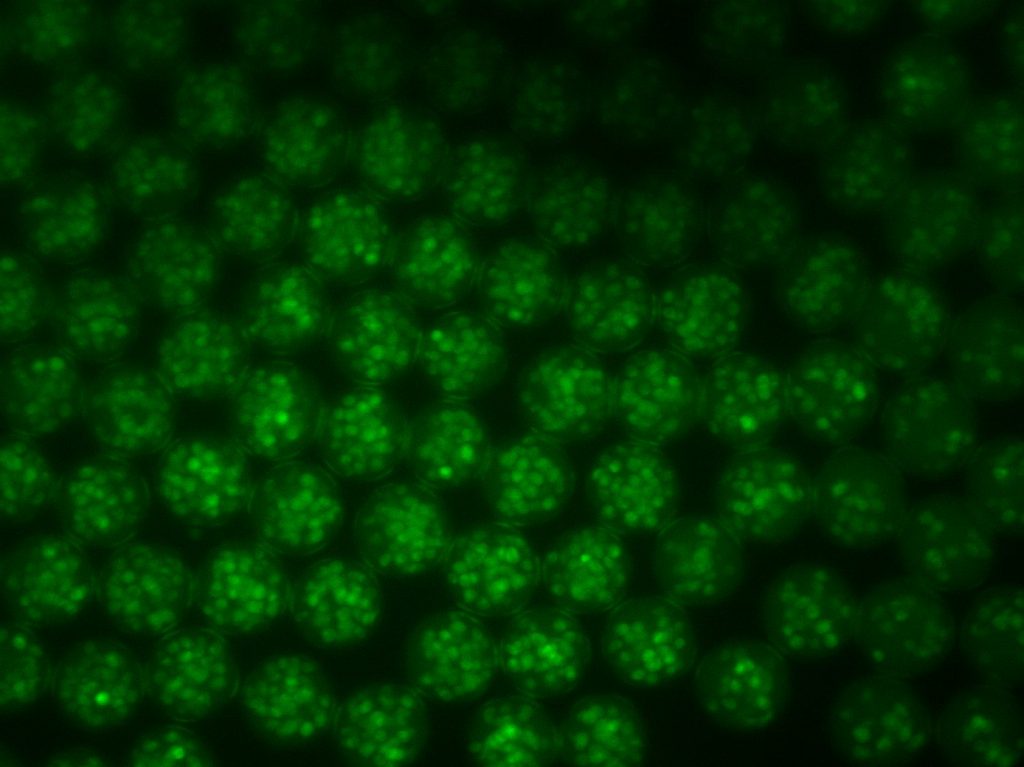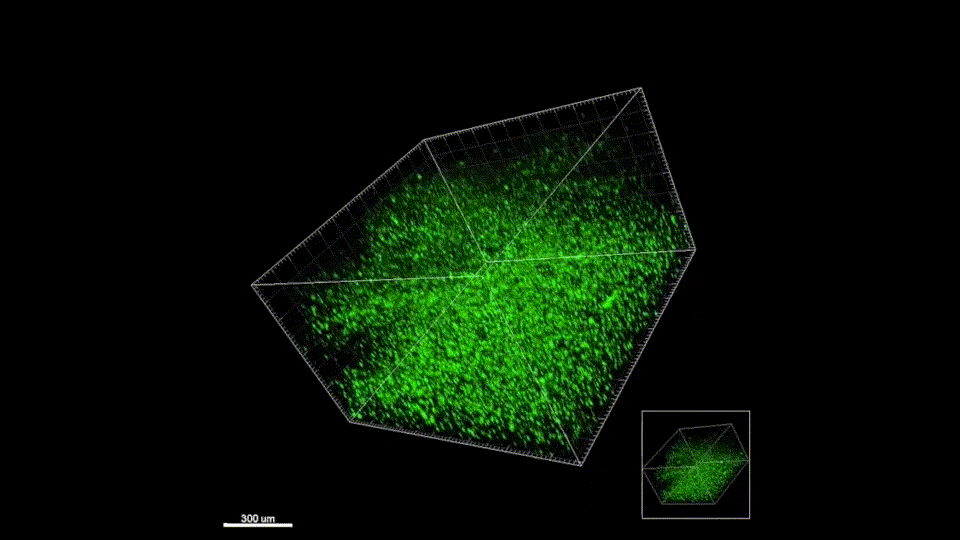Altmetric Score
Dimensions
Citation
Microporous annealed particle (MAP) hydrogels are porous 3D scaffolds generated by interlinking randomly packed microgels (µgels). Particle fraction, hydrogel stiffness, microparticle shape, and crosslinking chemistry are paramount to the microstructure that microgels make within MAP scaffolds. Of these parameters, control over the particle fraction in MAP scaffolds varies greatly by user and drying technique, leading to inconsistent microarchitectures. These inconsistencies have biological ramifications, as the particle fraction of MAP scaffolds determines the void space within the material which strongly impacts cell growth. Here, we describe a method of freeze-drying microgels that leads to consistent and user-defined particle fractions by weighing the dried microgel powder and reconstituting at known volumes. Though freeze-drying hydrogels typically leads to ice crystal and cryogel formation, we report on mediums that result in freeze-dried microgels that retain their original properties when rehydrated. By rehydrating lyophilized microgels to form MAP scaffolds, we demonstrate that particle fraction controls the bulk scaffold stiffness, but not local microgel stiffness. Further, the particle fraction in MAP scaffolds directly affects cell growth and macromolecular diffusion. Using controlled particle fractions in MAP scaffolds, we can now reproducibly assess mechanical properties, diffusion of macromolecules, and cell responses within user-defined microarchitectures. STATEMENT OF SIGNIFICANCE: The porosity of biomaterials is one key characteristic that influences cell infiltration and growth. Granular hydrogels are a class of biomaterials that are comprised of small, building block components that boast a porous architecture in the void space between the particles. Controlling the composition of these granular materials is key to guiding cell responses. In this work, we demonstrate methods for controlling the fraction of the material containing hydrogel versus void space. As a result, we can now reproducibly study the effect of particle fraction on cell responses, mechanical properties, and mass transport in granular hydrogels.








